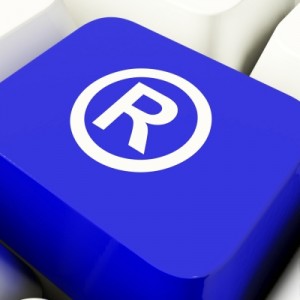The amount of time required to obtain a Trademark registration varies dependent upon many factors. Let’s take a look at the process your trademark application will go through to give you a better understanding of the length of time it may take to obtain a trademark registration.
Step 1: The Trademark Search – Before filing your trademark application, it is generally a good idea to perform a search. A search will give you an indication of whether or not it is possible to obtain a registration and who else may be using similar trademarks. Knockout searches, which are a type of search used to determine if anyone else is using the exact same mark for the same services, are effective for weeding out names already applied for but a knockout search will not provide you with any information regarding different types of spelling for the same word or an indication of registrability of your trademark. A registrability search will give you a better indication of whether or not it is worth your time and resources to apply for a trademark application. This search will provide information relating to similar marks and take into consideration different types of spelling. While a registrability search will not guarantee that your trademark is registrable, it will provide you with an indication of whether or not it is possible. The amount of time that this step takes is directly proportional to the amount, type and depth of searching that is done.
Step 2: Preparing the Trademark Application –The actual preparation of a trademark application is quite simple, however the understanding of a client’s business, what services they provide and the wares they sell can be more time consuming. The complexities of each trademark application are different and some may take more time to complete than others. In general, a trademark application likely takes anywhere from a few hours to a few weeks to complete.
Step 3: Prosecution of the Trademark Application –If your trademark application is filed electronically, you will usually receive your filing certificate within a week of filing. After receiving your filing certificate, it is unlikely that you will receive anything from the Trademarks Office for about 9 months to a year. Your application is reviewed based upon the order in which it is received at the Trademarks Office and cannot be processed out of order. Your first correspondence with the Trademarks Office will either be an Approval Notice or an Examiner’s Report. If you receive an Examiner’s Report, you are required to respond and make the necessary corrections to put your application in a condition for approval. If this cannot be done, your application will become abandoned and you will not proceed to step 4.

Step 4: Once you receive an Approval Notice, your trademark will be advertised in an issue of the Trademarks Journal. After advertisement, other parties can oppose your application. If there is no opposition to your application during the two month period following advertisement of your mark, you will receive a Notice of Allowance and proceed directly to Step 6. If your application is opposed, you will enter into opposition proceedings.
Step 5: Opposition Proceedings – if your application is opposed, you can spend a lot of time (more than 2 years) and money in opposition proceedings. It is highly recommended that if you become a party to an opposition proceeding that you hire a trademark agent. There are many deadlines, extensions of time and rules associated with opposition. Failure to properly follow the steps can result in the abandonment of your application.
Step 6: Registration – If you receive a Notice of Allowance or if an opposition is decided in your favor, you can pay the registration fee to obtain a Trademark Registration. You usually obtain a Certificate of Registration within one month of paying your registration fee.
If your application is filed correctly, approved without changes and is not opposed, it may be possible to obtain a registration in approximately a year and a half. If responses to Examiner’s Reports are required or the application is opposed, it can take much longer to obtain a registration.
